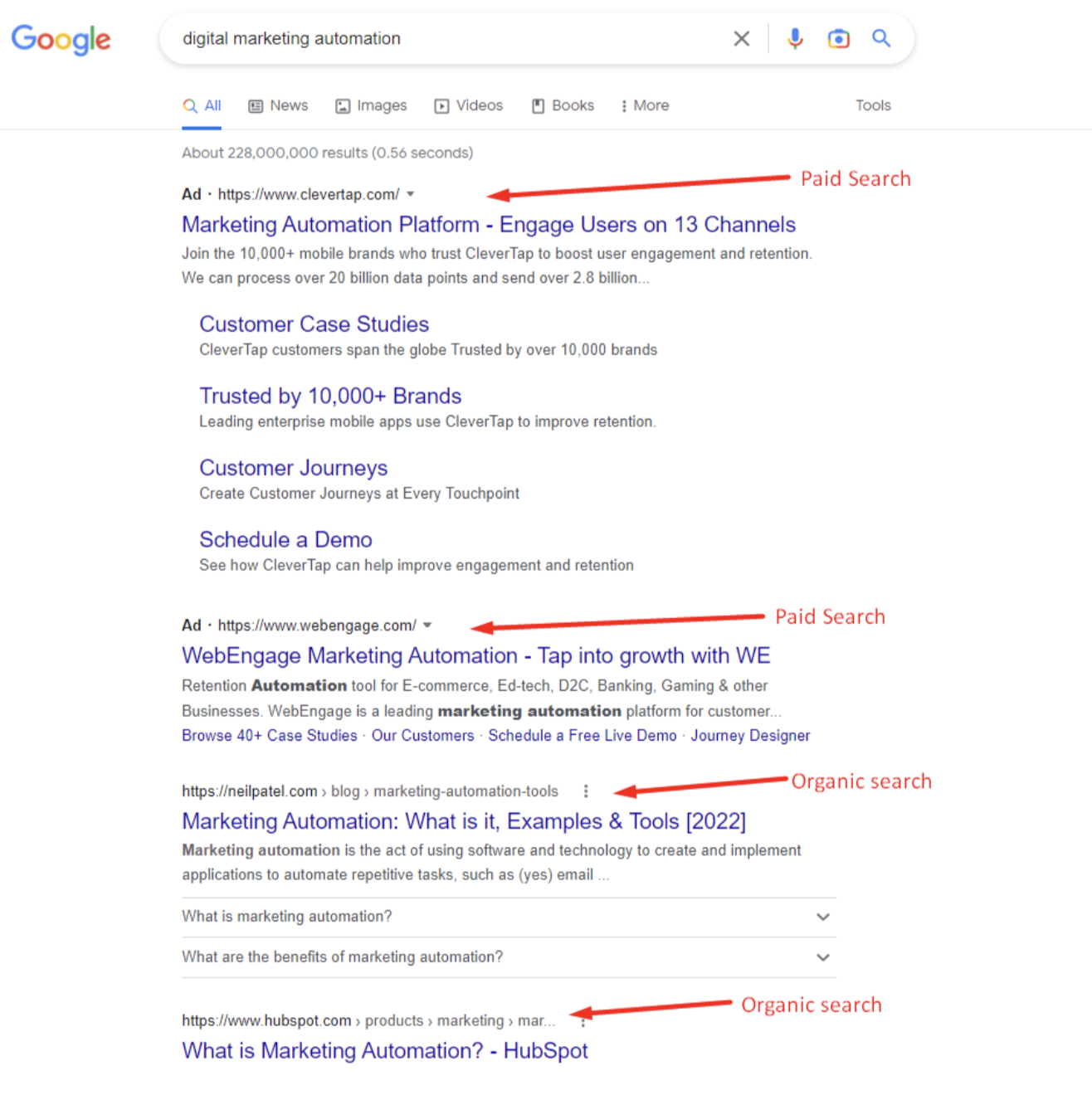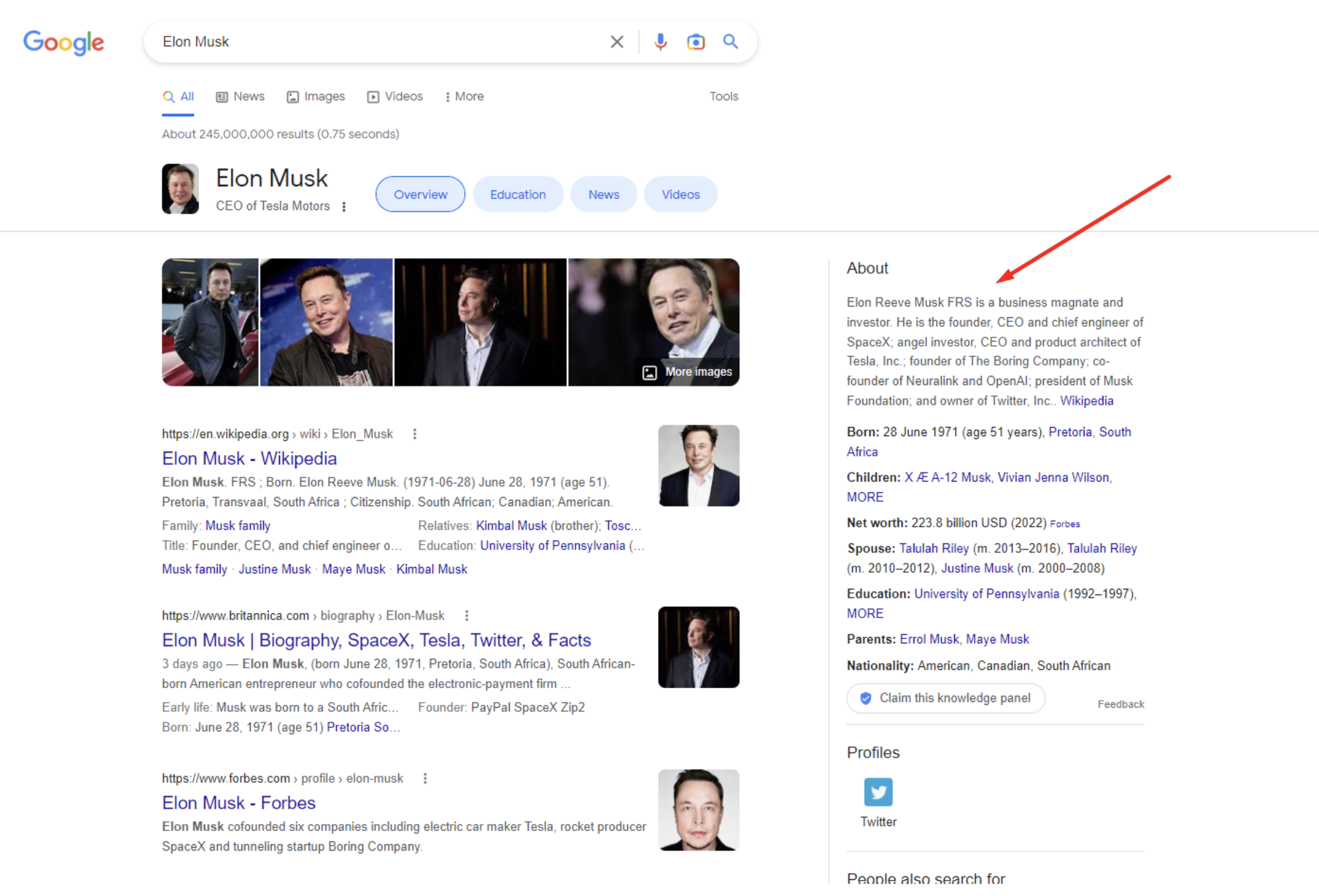How To Improve Your Content’s Organic Click-Through Rate

Yassin Aberra
I live and breathe Digital Marketing.
How To Improve Your Content’s Organic Click-Through Rate
In ROI-based digital marketing, the struggle to rack up organic click-through rates (CTR) permeates all marketing activity. In fact, it forms part of a crucial group of metrics often looked into when measuring the success of digital marketing services
Here’s why: without click-throughs from web traffic, the prospects of nudging visitors down the sales funnels immediately become thin.
No clickthroughs. No conversions. It’s that simple. And if you’re concerned about the quality of your click-throughs rather than getting carried away by the numbers game, you want to do things… organically.
For the layman, it appears pretty easy — simply generate backlinks and populate your website with content. More visibility, and as a consequence, more clickthroughs. Cha-ching! Wrong. If it were that easy, every Jack and Jill’d have their websites pinned unto the first page of SERPs. Plus, organic CTRs, though largely dependent on SEO, need a bit more to move the needle when it comes to attracting clicks.
In other words, while it’s pretty obvious that to ramp up organic CTR, you must optimize your website for SEO (as your content garners more visibility, you get more clicks), attracting clicks is a different kettle of fish.
You’ll also need to optimize for certain elements to rank high in the SERPs. With algorithm updates and different types of search intent, it can feel like a never-ending game of whack-a-mole. But we’re here to help you make sense of it all. Before diving in headlong, it’s worth going over fundamental concepts:
SERPs (Search Engine Results Page)
Think of SERP like a massive game of hide and seek.
Search engines crawl the internet, gathering all the information they can find. Then, when a user types in a query, the search engine sifts through all that information to display the most relevant and quality results.
It’s quite impressive, if you think about it. And definitely beats trying to hunt for something yourself on the vast expanse of the world wide web. It then follows that high-ranking results on the SERP attract the fattest share of click-through rates.
Paid Search Results
Advertisers bid on specific keywords and phrases that are relevant to their products and services, and their ads are then displayed in the search results when people use those keywords. The higher the bid and the better the ad’s relevance and quality, the higher the ad will rank in the search results.
So if you see an ad at the top of your search results, it means that the advertiser is willing to pay more for that particular keyword, as it’s crucial for their business. And just like any auction, there’s no guarantee that upping your bid will always increase your ad rank – it also depends on how well-crafted and relevant your ad is compared to others.
Organic search results
Well, let’s just say it involves some complicated algorithms and a whole lot of crawling by good ol’ Google bots. But in simpler terms, organic search results prioritize websites that offer valuable and relevant content to the user’s search query.
So basically, if you want to show up at the top of those results, make sure your website has plenty of high-quality content and a solid SEO strategy. And if all else fails, just bribe the bots with some organic snacks. They love those.

SERP Features and how they drive Organic CTR
Acing the basics of SERP features requires background knowledge of search snippets. They are the short descriptions that appear under a search result on a search engine. These descriptions typically include the title of the webpage and a summary of its content, as you can find below:
With non-traditional search snippets now populating the SERPs, Google rolled out additional features that sufficiently answer user search queries without driving users to another page. (technically known as zero-click searches)
These additional features are called SERP Features. They include but are not limited to: reviews, rich snippets/rich cards, local packs, ‘People Also Ask’ boxes, featured snippets, top stories carousels, knowledge graph panels , tweet, video, related questions, in-depth article, Adwords (Bottom), Adwords (Top), site links, image pack.
These features aim to provide users with quick information or direct them to valuable content within the search results page. For your website to appear in these features, it’s vital to have well-structured content that aligns with user intent. It is also crucial to stay up-to-date with industry news and updates.
Now, let’s switch gears and unpack our top picks and which SERP features influence organic click-through rates:
Local pack
Local pack refers to the map listing that pulls data from the Google My Business directory to appear at the top of SERPs. They typically include 3 businesses geographically closest to the searcher (known as the Google 3-Pack). These listings often include important details like the business’s address, phone number, and average ratings.

— Leveraging Local Pack to organically increase CTR
To increase your chances of appearing in the local pack, you can create and update your Google My Business listing with complete and accurate information, including your business name, address, and phone number.
You should also consistently gather positive reviews from customers and regularly update your listing with relevant keywords and photos. Additionally, actively building citations on other local directories can further boost your visibility in the local pack.
Ultimately, the key to appearing in the local pack is establishing a strong online presence and consistently providing high-quality services to customers.
Featured snippets
Unlike traditional snippets, featured snippets are a summarized answer to a search query displayed at the top of the search results page. These snippets pull information from websites that have been ranked highly by search engines.
Having your website appear in a featured snippet can increase click-through rates and drive more traffic to your site. However, it is important to note that only one website can be chosen for each featured snippet. Overall, optimizing for featured snippets can be a valuable strategy for improving your SEO, sort of like this:
Ouchhh. Admittedly, while this makes for grim reading to most Ronaldo stans worldwide, it appears the Messi camp (their competition) beat them to a spot on the featured Snippets to settle a long-ranging debate of who rules the roost in world football.

— Optimizing for CTR using Featured Snippets
Appearing in a featured snippet earns you a place in the top spot, automatically generating more CTR.
To boost your chances of making the featured snippet, ensure the content on your website is well-organized and clearly answers your target audience’s question. Including header tags, bullet points, and a display of visuals (think illustrations and images) and listicle format can also help your content stand out to search engines.
Additionally, keep an eye on what keywords and questions are frequently leading to featured snippets, and create content specifically targeting those questions.
Knowledge Card
Google Knowledge Cards are generated using a combination of algorithms and sources, such as the Google Knowledge Graph.
These algorithms analyze various factors, including search queries, private data partnerships, and web content, to display relevant information in an easy-to-read card format. This information can range from simple facts to more in-depth details, like sports statistics or biographical information, and typically appear at the top of SERPs, as seen below:
Optimizing for CTR using Google Knowledge Cards
Google Knowledge Cards provide concise and relevant information directly on the search results page, making it more likely for users to click on your website.
While knowledge cards can be hard to come by since they directly pull from knowledge graph results, including structured data on your website can increase the chances of your site being featured in a Knowledge Card.
Knowledge Panel
Much like Knowledge cards, the google knowledge panel is powered by a combination of algorithms and information gathered from different sources, including Wikipedia, social profiles, and other trustworthy websites.
Individuals or organizations can also directly provide information to be displayed in the panel through the Knowledge Graph feature. When you search for a topic on Google, the algorithm evaluates all available sources and displays the most relevant information in the Knowledge Panel.
This information is constantly updated to ensure accuracy and provide the most up-to-date information for users. In addition to displaying basic facts, the Knowledge Panel may also show related topics, suggested searches, and links to relevant websites or social media pages. It’s usually located on the right side of SERPs, as seen here:
Improving CTR Through Knowledge Panels
One way to improve your click-through rate (CTR) in Google’s Knowledge Panels is by accurately representing your brand information. This includes adding an up-to-date logo, a clear description of your business, and accurate contact information.
Looking to go for the kill? Create a Wikipedia page — it’s Google’s go-to for reliable information with a 99.5% accuracy. A social media presence across different platforms will also come in handy.
Another tip is to actively manage any Knowledge Panel features that are available for your brand, such as adding a “People Also Search For” section or highlighting customer reviews.
Finally, monitor and respond to any customer questions or reviews that appear in your Knowledge Panel, as this can have a positive impact on potential customers’ perception of your brand.
People also ask or PPA
This feature on search engines displays a list of questions and answers that are related to the search. This list comes from a variety of sources, including the top results for the initial search query and other websites.
One way to improve your click-through rate (CTR) is by utilizing the “People also ask” feature on search engine results pages. PAA can provide helpful information to users and also give insight into potential keywords and topics to explore for better search results. Additionally, PAA can be a valuable tool for marketers to understand customer pain points and points of inquiry regarding their industry or brand.

Source: www.ahrefs.com
How To Improve CTR With People also ask
By including relevant questions and answers in this section, you can draw more attention to your website and entice users to click through to learn more about those specific topics. Additionally, answering these questions can help improve your SEO and increase the likelihood of appearing in related searches.
To utilize this feature, conduct a search for a keyword relevant to your business and look for the “People also ask” section on the results page. Click on each question to expand the answer, and if it is relevant to your site, add the question and answer to your website’s content.
You can also use tools such as Answer The Public or SEMrush’s “Questions” feature to generate a list of related questions you can incorporate into your content.
Reviews
Reviews are another feature on Google that allows customers to leave ratings for businesses. Located between the URL path and page description, these reviews can help other potential customers make informed decisions about where they choose to spend their money.
How to boost CTR through Reviews
Reviews can be a key tool in your marketing arsenal to boost your CTR once you:
- Showcase customer reviews on your website and marketing materials for social proof and build trust with potential customers.
- Make sure to include star ratings and a mix of positive and negative reviews, as this can increase credibility.
- Incorporate keywords from customer reviews into your website’s meta tags and content to improve SEO.
- Get more positive customer reviews on your Google My Business profile and offer incentives for customers to leave reviews, such as discounts or entry into giveaways.
Videos
One way to boost the click-through rate (CTR) of your website or advertising campaign is by incorporating videos. Videos can grab a viewer’s attention and keep them engaged, leading to a higher likelihood of clicks.
How to boost CTR through Videos
To make the most out of video content, consider including a compelling headline or thumbnail image. You can also add a call-to-action within the video itself or include clickable links in the video description.
Take advantage of SEO with the video feature by including relevant keywords and providing a detailed description to drive organic traffic that’ll generate clicks.
You can also apply video schema markup to your website. To achieve this, you’ll need to add certain tags within the HTML of your webpage. These tags include “videoObject” to indicate the page is about a video, as well as “name,” “description,” and “thumbnailUrl” to provide information about the video itself. Additionally, you must include markup for the actual video file, such as a “contentUrl” and “embedUrl.”
Once you have added these tags, you can test your markup using Google’s Structured Data Testing Tool to ensure it’s properly applied and eligible for video enhancements.
Climbing the ranks of Google Search Results in 2022
The theme of Google’s swell of updates, algorithms, and rollout of SERP features is spelled: UX. Put in context: providing answers that create an optimal experience for users.
This is why for SEO services to be successful, it must be built around an enriching human search experience by using targeted keywords, creating compelling meta descriptions, and optimizing your headers and URLs. These tactics — built around valueable content that’s irresistible to Google’s search engines — will attract more clicks from potential customers searching for your products or services.
Got inquires about how to nail organic CTR? Not sure how to track and optimize your SEO for the best CTR outcomes? Are your current CTRs hitting a snag? Reach us here, and we’ll get back in an instant. A digital marketing company with experience in optimizing successful campaigns with proven results, we can help you check the pulse of your marketing campaign and get you right back on track.




